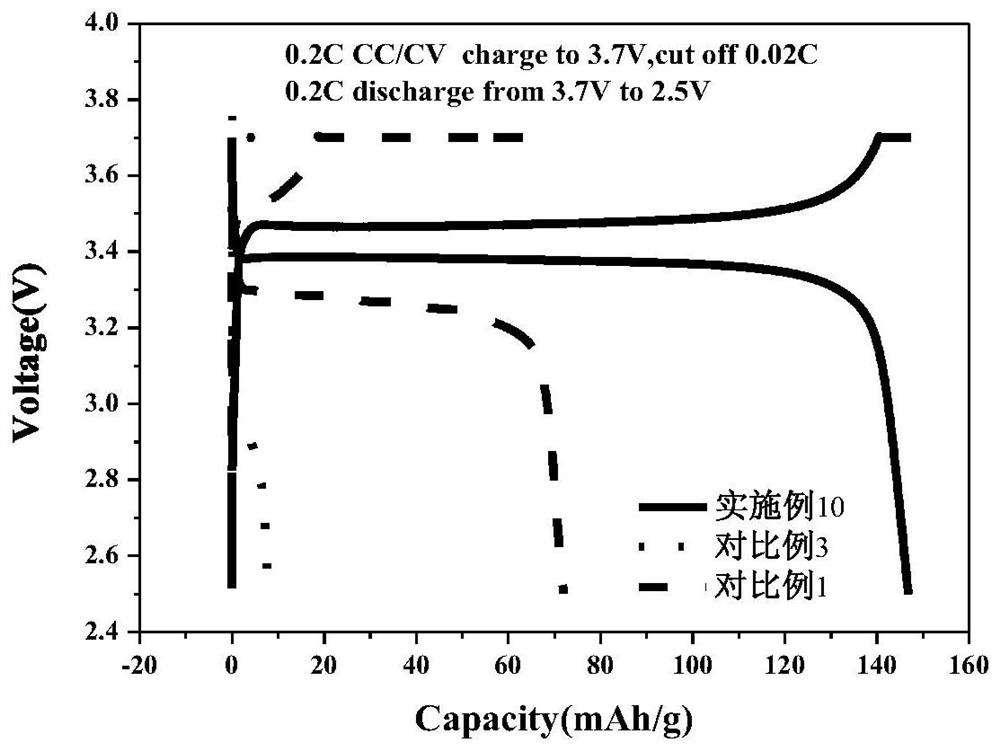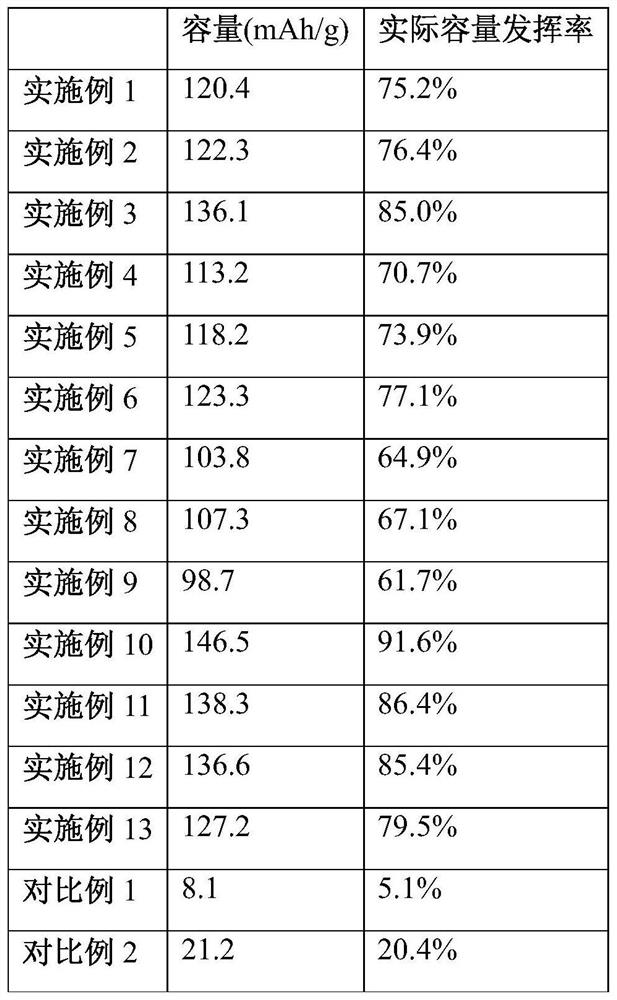A solid-state battery capable of operating at room temperature and its preparation method
A solid-state battery, solid-state electrolyte membrane technology, applied in the manufacture of electrolyte batteries, lithium batteries, secondary batteries, etc., can solve the problem that the actual capacity of solid-state batteries is difficult to fully exert, the electrode/electrolyte interface compatibility is poor, and the interface impedance affects ions. Transmission and other issues, to achieve the effect of being suitable for large-scale production, not harsh preparation conditions, and reducing thermal management costs
- Summary
- Abstract
- Description
- Claims
- Application Information
AI Technical Summary
Problems solved by technology
Method used
Image
Examples
Embodiment 1
[0032] Embodiment 1, a preparation method of a solid-state battery capable of operating at room temperature:
[0033] In a dry room (humidity <5%), weigh lithium difluorophosphate and dissolve it in DMSO, the concentration of lithium difluorophosphate is 0.06M, add water remover hexamethyldisilazane 50ppm, stir to form a homogeneous solution, Soak the metal lithium sheet in it at room temperature for 5 minutes, take it out with tweezers, stick off the floating liquid on the surface of the lithium sheet on a dust-free paper, and obtain sample A.
[0034] Take the positive electrode sheet coated with a solid electrolyte membrane, wherein the mass of the solid electrolyte membrane is 0.02g, and after baking in a vacuum oven at 30°C for 20min, the solid electrolyte membrane is in a softened state, and 0.002g of liquid state Propylene carbonate was added dropwise on the solid electrolyte membrane of the positive electrode sheet to obtain sample B.
[0035] Assemble a button-type a...
Embodiment 2
[0037] Embodiment 2, a preparation method of a solid-state battery capable of operating at room temperature:
[0038] Other conditions are identical with embodiment 1, and difference is that soaking time improves to 10min.
[0039] Use Xinwei test equipment to conduct charge and discharge tests on solid-state batteries at room temperature. The test results are shown in Table 1-1.
Embodiment 3
[0040] Embodiment 3, a preparation method of a solid-state battery capable of operating at room temperature:
[0041] Other conditions are identical with embodiment 1, and difference is that soaking time improves to 30min.
[0042] Use Xinwei test equipment to conduct charge and discharge tests on solid-state batteries at room temperature. The test results are shown in Table 1-1.
PUM
 Login to View More
Login to View More Abstract
Description
Claims
Application Information
 Login to View More
Login to View More - R&D
- Intellectual Property
- Life Sciences
- Materials
- Tech Scout
- Unparalleled Data Quality
- Higher Quality Content
- 60% Fewer Hallucinations
Browse by: Latest US Patents, China's latest patents, Technical Efficacy Thesaurus, Application Domain, Technology Topic, Popular Technical Reports.
© 2025 PatSnap. All rights reserved.Legal|Privacy policy|Modern Slavery Act Transparency Statement|Sitemap|About US| Contact US: help@patsnap.com



